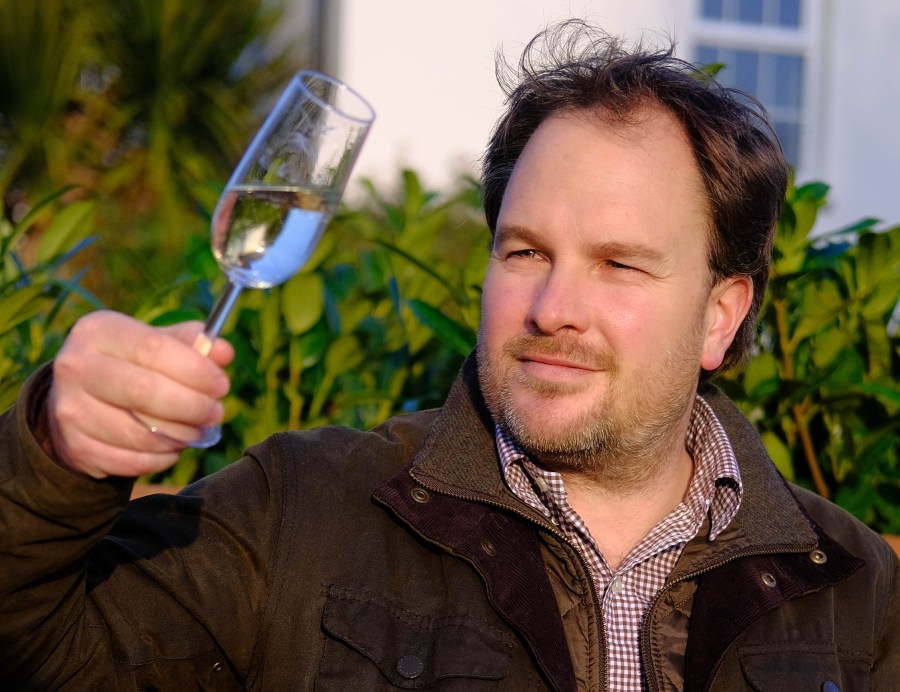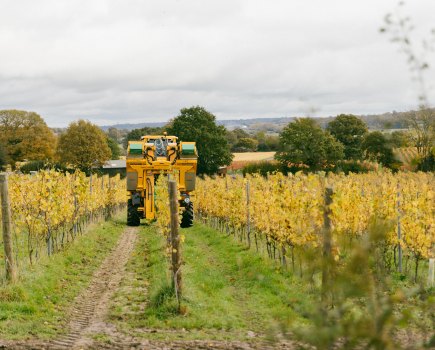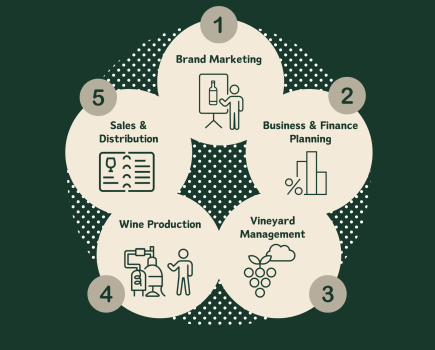From the cool altitude of the Swiss Alps to the dry, hot, flat plains of the Murray-Darling region of Australia, Dr Alistair Nesbitt has been on a global journey through wine and viticulture for more than 20 years.
With a First Class Bachelor of Science in Viticulture and Oenology, a Masters in Wine Science and a PhD in Viticulture and Climate Science, Alistair’s journey has very much been a scientific one, leading him to chart the future of viticulture in the United Kingdom in the context of a changing climate.
Today, as CEO of Vinescapes, he both runs the business, and works with clients in India, Belgium, France, Italy, Sweden, the USA, and the UK to manage climate risks and develop resilient wine production businesses.
What first ignited your passion for wine and viticulture?
My career in the wine industry evolved more out of necessity than passion in the beginning.
I did grow up around vineyards in Switzerland, but my career was born from my most desperate moment when I had spent my last dollars travelling around Australia.
In 1998, I found myself sleeping on a park bench with my backpack in Hobart, Tasmania and thankfully the local job centre offered me a week of work picking grapes
Alongside a few Samoans, a couple of Kiwis and the vineyard owner I landed into the world of vines and wine, gratefully earning enough money for food and a hostel bed!
This job led to more vineyard work in the Murray-Darling, planting a vineyard near Margaret River in Western Australia, and a couple of years working in New Zealand where a memorable bottle of Te Mata from Hawkes Bay converted me into a lifelong wine lover.
How much of your work has been shaped by international experiences?
I’ve been really fortunate to travel with my career and to get opportunities to learn about viticulture, the industry and wine cultures in many different locations.
At Vinescapes, we are a truly international business. I’ve had direct experience tackling irrigation challenges in China, finding new viticulture regions in India, advising first growth Chateaux in Bordeaux about managing extreme weather events, and I’ve devised diversification strategies for wine producers in Spain. I’ve also guided farmers and companies exploring options to transition sites into vineyards from Belgium through to Scandinavia.
When did climate science begin to capture your attention?
I have a confession to make here! Of all the things I love in the world, snow would be number one. Where I grew up, digging your way out of your front door through a metre or two of snow was normal. I guess it’s part of my DNA. By the late 1990s I became acutely aware we were seeing less snowfall and summers were warming.
This observation combined with my conservation work (at the time) and passion for wine led me to start to get concerned about what climate change would or could do to the natural environment and wine production. While working at Plumpton College in 2012 running the WineSkills Sustainability training scheme, I successfully applied to undertake a PhD in Viticulture and Climate Change at the University of East Anglia in Norfolk, where Climate Change Science was pioneered, making climate science research and analysis now a key part of what I do.
In what ways has your work in climate science helped to shape the wine industry in the UK?
Colleagues and I have researched, presented and published work on recent and future impacts of climate change on the UK wine production sector. We’ve worked with more than 100 companies and individuals in the UK to help them understand both the opportunities and risks presented by a changing climate.
This work has opened up new areas of opportunity such as the Crouch Valley in Essex. It has also made clear the need for vineyard owners to be flexible and build-in ways to diversify to mitigate the risks of climate change.
What are some of the things producers can do to farm sustainably?
There are four things I advise our clients to do, beyond the initial process of selecting the right site and the right grape varieties for each site:
- Look into what sustainability means for your vineyard and business in a serious way and design accordingly. If you don’t devise a road-map for how you can become environmentally sustainable, it could impact the site’s economic potential. With a strategy in place, we find our clients not only become cleaner and greener, but the rest of their triple bottom line also benefits.
- Set your targets and decide what processes work best for your vineyard and vineyard team. Don’t follow the crowd or a dogmatic mantra. Rather learn what works by focusing on set areas within your vineyard, i.e. one block or zone. That way you can take a risk-sensitive approach to sustainable viticulture, and not force change across your whole vineyard overnight.
- Monitoring and measuring your progress are essential for understanding if the road-map, targets and farming practices identified by the vineyard team are working. We help our clients to tinker or tweak practices and processes to suit the site and express the best characteristics of its terroir with regular assessment of the results we are monitoring in the vineyard. This could take a couple of years to build comparative data from season to season.
- In terms of actual practices, I’m a founding Trustee of the Regenerative Viticulture Foundation (RVF) and I’d urge anyone setting out on a journey to be more sustainable to look at the RVF Guide (www.regenerativeviticulture.org/rv-guide/). It’s useful for discovering regenerative practices and helps growers, assess their level of integration and explore other practices they could consider.
For more like this, sign up for the FREE Vineyard newsletter here and receive all the latest viticulture news, reviews and insight




